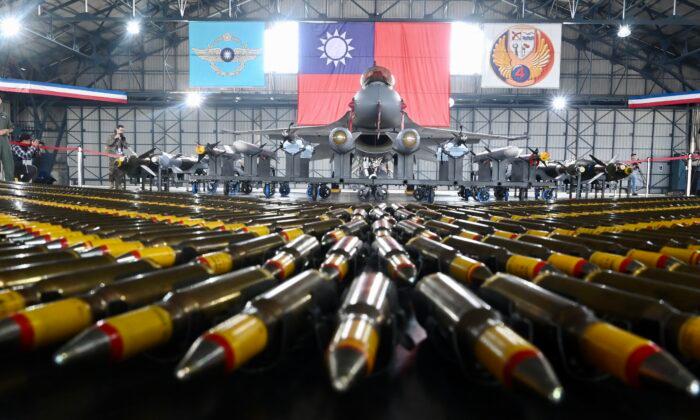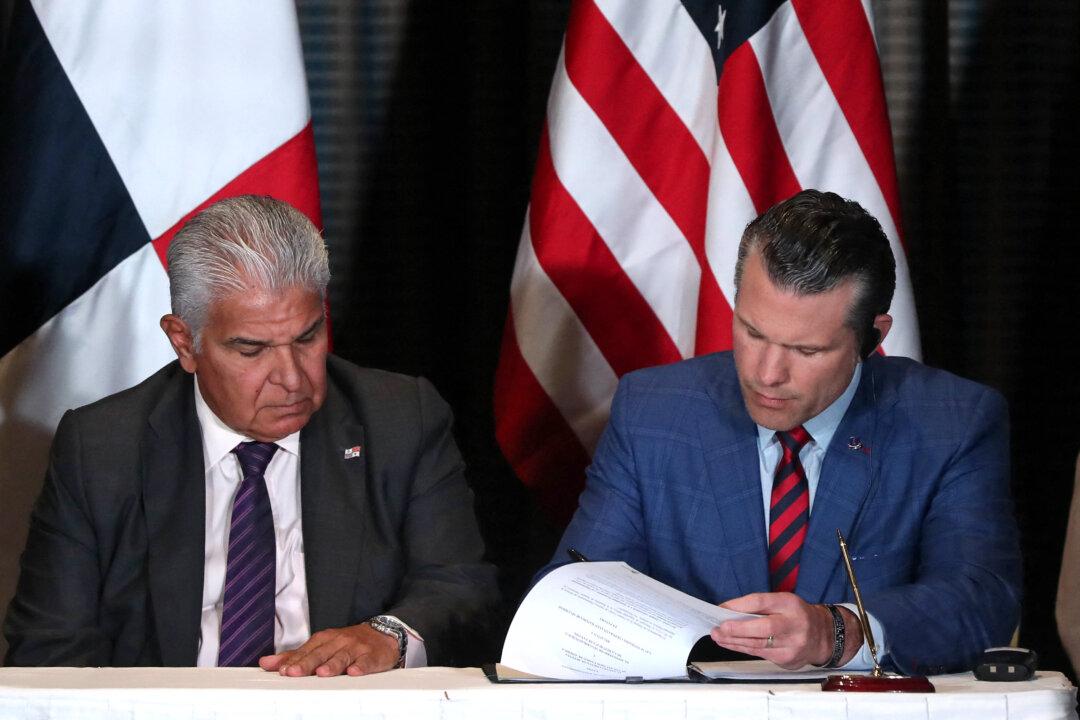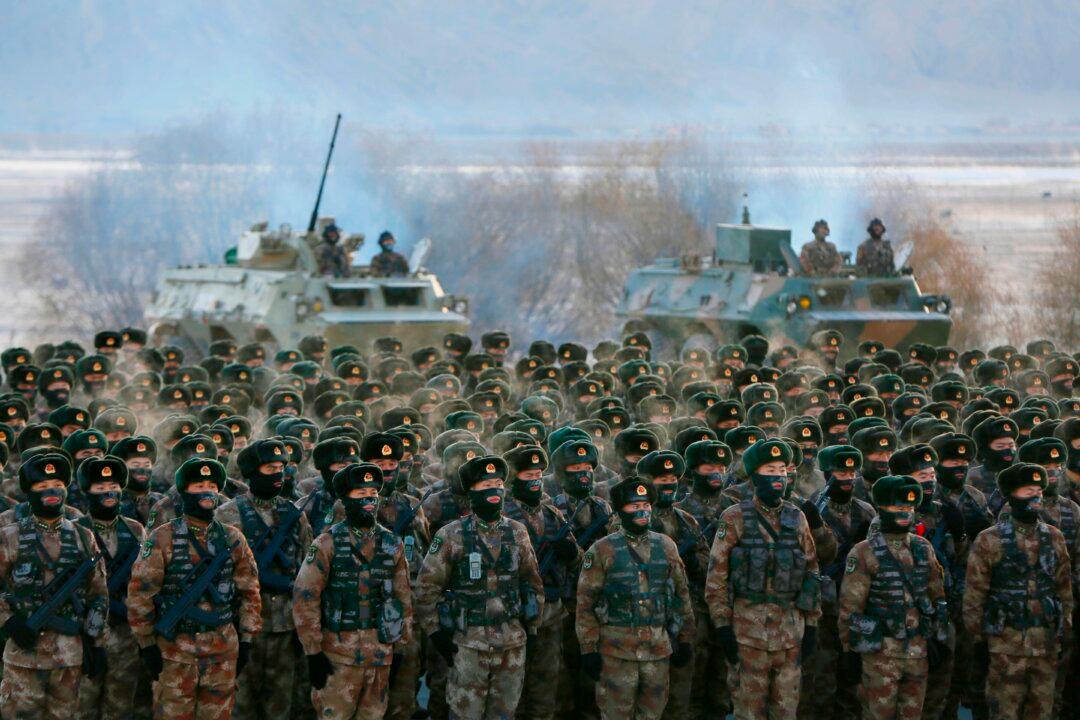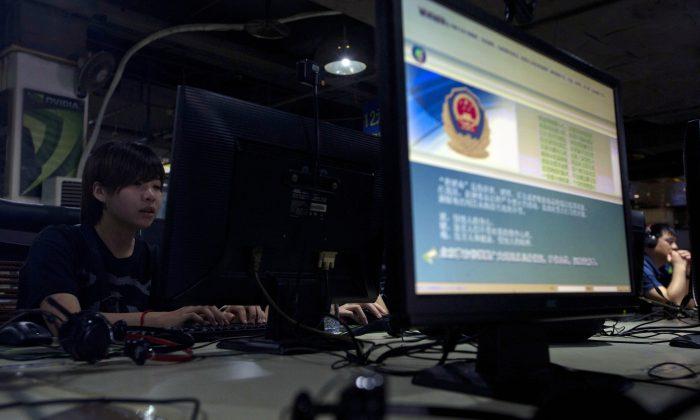Commentary
On July 27, U.S. Secretary of Defense Lloyd Austin stated, “I am committed to pursuing a constructive, stable relationship with China, including stronger crisis communications with the People’s Liberation Army.” It’s a gesture, but entirely unrealistic. The more effort the United States puts into stabilizing the relationship, the more slack for China to change facts on the ground in its favor. Other performances, such as plans to send over two dozen U.S. F-22 stealth fighter jets to Asia for exercises, announced this week, are not enough.
China’s military planes almost daily invade Taiwan’s airspace. Beijing has humiliated senior Biden officials, including Secretary Austin, who China has thus far declined to grant a high-level audience. The military man shouldn’t have sought it in the first place. Austin ought instead to leave diplomacy to the diplomats, and focus on appearing fearsome. He can add to U.S. and Taiwan deterrence against Beijing by simply appearing more gruff, through an end to his pointless begging for a meeting with Beijing. That might get, with greater alacrity, the Washington-Beijing crisis communications that the Secretary seeks.
With China’s military buildup of missiles, troops, and ships opposite Taiwan, Beijing is increasing the rapidity and tenor of threats hurled in Taipei’s general direction. Without much concrete defensive response from the United States, experts are increasingly concerned that an amphibious invasion of Taiwan could come within the next five years.
Such an attack could, potentially, be met by a U.S. military defense of the island. The Taiwan Relations Act does require the U.S. military to plan and prepare for Taiwan’s defense, as well as sell weapons to Taiwan and engage with Taiwan’s leadership on security matters. However, many U.S. defense professionals are operating under a cloud of fear, and such a defense could escalate into a wider U.S.-China war. That unhappy prospect deters the United States from committing to Taiwan’s defense, ironically making war more likely. The lack of a U.S. commitment may also be aimed at encouraging Taiwan to maximize its own defense expenditures and military readiness.
The ambiguity eggs China on in its hope that military pressure, and possibly a military invasion, could put Taiwan under Chinese Communist Party (CCP) control. All of this bluster and ambiguity has some national security experts, including Ian Easton, author of “The Chinese Invasion Threat: Taiwan’s Defense and American Strategy in Asia,” publicly unsure whether the United States and its allies would actually defend Taiwan militarily if China were to invade.

The danger of this ambiguity is increasing. Some in China’s government and military, with no apparent repercussions, have made nuclear threats against Japan, apparently to deter the pacifistic country from coming to the defense of Taiwan. Such threats emanating from Beijing are incredibly irresponsible and ill-conceived, given that they could spark rhetoric that starts a war against China. Asia is turning into a tinder box because China is greedy for power, and nobody knows for certain what America will defend.
We still have time to reverse this ambiguity, including by changing military facts on the ground in Taiwan to demonstrate a full U.S. commitment to the country’s defense. We can do this as long as experts, and China, believe that the United States would likely prevail in a war over Taiwan.
According to Easton, writing in The Diplomat, “If the U.S. came to Taiwan’s defense, few experts would give China good odds.” As long as China knows this (which is a big assumption for sometimes ill-informed dictators), there are things we can do.
Creative, albeit controversial, strategies are percolating in the national security community. Should China seek to invade Taiwan, the latter country will bring a number of its defenses into action, including highly-accurate long-range missiles, smart mines, tanks, drone swarms, helicopter gunships, cyber capabilities, electronic warfare, anti-satellite capabilities, saboteurs, spies, and economic warfare measures. Taiwan has a standing army of 190,000, plus the potential to raise between 260,000 and two million reserves, who have undergone the most basic of minimal military training.
“Both [China and Taiwan] would have the fearful option of using weapons of mass destruction to disperse biological, chemical, and radioactive agents against the other,” wrote Easton in a Diplomat article. “And both might apply more exotic weapons, such as directed energy weapons and hypersonic missiles.” Hypersonic missiles fly so quickly that they are relatively impervious to countermeasures.
Professor James Kraska, who has joint appointments at the U.S. Naval War College and Harvard University, wrote in an email that Taiwan needs more “asymmetrical systems, such as numerous mines, missiles and missile defense, [and] civil defense,” in order to implement a “porcupine strategy.” Kraska’s advice would wisely improve Taiwan’s asymmetrical defensive capabilities.
One of the United States’ and Taiwan’s most important defensive strategies is the rapid laying of smart mines, both in the sea and on land. Taiwan has a large quantity of mines for this purpose, but has not sufficiently trained in their rapid deployment, according to a national security expert. The United States would likely help lay mines in the Strait by launching them from B-52 bombers, including through the use of airfields in Japan and Guam. The United States and Taiwan should ensure their training on this matter, including through joint public training that simultaneously demonstrates the U.S. commitment to Taiwan’s defense.
Taiwan is also failing to invest in alternative ports, airfields, and data links for resupply and data resiliency during any future conflict, according to sources. In an email, Easton concurred that more needed to be done. The U.S. president “could order the Pentagon to study options for keeping Taiwan fed, watered, and equipped in the event of a protracted blockade,” he wrote in an email. “According to [China specialist] Lonnie Henley, few serious preparations have been made to ensure the CCP can’t starve the Taiwanese out and cut off their ability to talk to the outside world as it happens.”

Easton referenced Henley’s February testimony to the U.S.-China Economic and Security Review Commission, in which the latter stated, “Penetrating a Chinese blockade of Taiwan would be a slow, grinding battle stretching over many months. It would not be the kind of rapid, decisive combat that U.S. forces prefer, but it would decide the outcome of the war. It is vital that we begin giving this phase of a potential Taiwan conflict the same serious attention we have given the landing phase.”
Easton added, “What would it take to counter a protracted electromagnetic, air, and maritime blockade? Could Taiwan’s government keep the power on? Could they keep from having all their underwater cables cut and communications satellites jammed? How robust is their internet?”
It is certainly in U.S., Japanese, and allied national security interests to subsidize the construction of air, maritime, and data entry-points, as well as data resiliency, in case of a needed defense of Taiwan.
Taiwan should mass-produce, or purchase, more robust A2/AD capabilities, including mines and anti-ship cruise missiles (ASCMs) of the Gabriel type, according to another national security expert. Israel’s Gabriel ASCM, produced and exported by Israel to Taiwan, has a range of up to 249 miles (400 km), which is more than double the width of the Taiwan Strait.
For civil defense, Taiwan should increase the recruitment, enlistment, and military training of its population, up to and including the levels found in Israel and South Korea, both of which have universal military service. Currently, according to defense analyst Paul Huang, Taiwan’s military is hollowed-out by too few regulars, lack of reserve training, short reservist stints, and leadership failures in maintaining incentives to keep troops at the most important front-line weapons systems, including tanks and artillery. In case of war, according to one of Huang’s military sources, “at least a third” of Taiwan’s tanks will lack operators, for example.
On the civil defense point, China has proven in Hong Kong that it will ruthlessly repress nonviolent attempts at resisting its power. So, Taiwan should focus on military-civil defense measures against a potential invasion, according to a military source, including the prepositioning of weapons for use by the population. According to the source, these should include rifles, explosives (e.g., for use as IEDs), and shoulder-fired missiles for anti-tank and anti-aircraft operations. Currently, there are concerns among military experts about the lack of supply of even modern rifles for all of Taiwan’s supposed 2 million reservists.
Taiwan’s high-technology industries, including its semiconductor industries, offer the CCP a plum for the picking after a Chinese invasion. Those industries that most appeal to China should be removed to other safer countries where they cannot be captured, and thus provide an incentive for an invasion by the Chinese regime. Taiwan can be incentivized to move its industries, including through U.S. and allied subsidies and tax incentives. Those Taiwanese industries that move to the United States for national security reasons, for example, should be allowed to bring their employees, and their grounds be given the status of Taiwan sovereign territory (much as are foreign embassies in the United States today).
The Taiwanese should feel comfortable that they are not losing their employees, industries, government revenues, or proprietary technologies to America, but rather putting them all in a safer place, from which they can be retrieved at any point without penalty. Taiwanese semiconductor employees, for example, could work tax-free in the United States and continue to pay taxes to Taiwan authorities.
To underscore the commitment of the United States to defending Taiwan in case of invasion, the United State should deploy either tripwire forces, as advocated by Taiwan military expert Ian Easton, or better yet, forward-deploy more substantial forces that can defend the island until reinforcements arrive. These forces can be placed into an interleaved allied command structure with Taiwan forces much as in South Korea and NATO deployments to Afghanistan.
Finally, Taiwan’s allies should begin working toward providing the country with an independent submarine-based nuclear deterrent, which can be sold or granted to the country to provide deterrence more quickly than would be necessary to develop the capability indigenously. The process of transferring or selling the equipment can be gradual, with inclusion of Taiwan naval officers on some U.S. or allied submarines as a start, and basing of Taiwan-affiliated submarines in U.S., British, and French ports. This avoids making Taiwan’s small submarine force an easy target for Beijing, minimizes the expense of at least three submarines maintaining continuous at-sea deterrence (CASD), and works toward an all-Taiwan nuclear deterrent at some point in the future.
Once these military measures are in place, it will be safer to recognize Taiwan as a sovereign nation, exchange state visits and diplomats at the ambassadorial rank and above, and utilize U.S. and European economic aid to lobby other states for the inclusion of Taiwan as a full member of the United Nations and other international organizations.
While many of these proposals are controversial, we need to think creatively in order to stop China’s decades-long threats to invade Taiwan. Our passivity in the face of threats from Beijing has led to additional threats against the Philippines, Japan, Australia, and even the United States.
As we increase the power of major allied democracies, and their economic, informational, and diplomatic countermeasures against the Chinese regime’s growing power, we should not neglect the more immediate and pressing need for a stronger military defense of Taiwan.
Anders Corr has a bachelor’s/master’s in political science from Yale University (2001) and a doctorate in government from Harvard University (2008). He’s a principal at Corr Analytics Inc., publisher of the Journal of Political Risk, and has conducted extensive research in North America, Europe, and Asia. He authored “The Concentration of Power” (forthcoming in 2021) and “No Trespassing,” and edited “Great Powers, Grand Strategies.”




